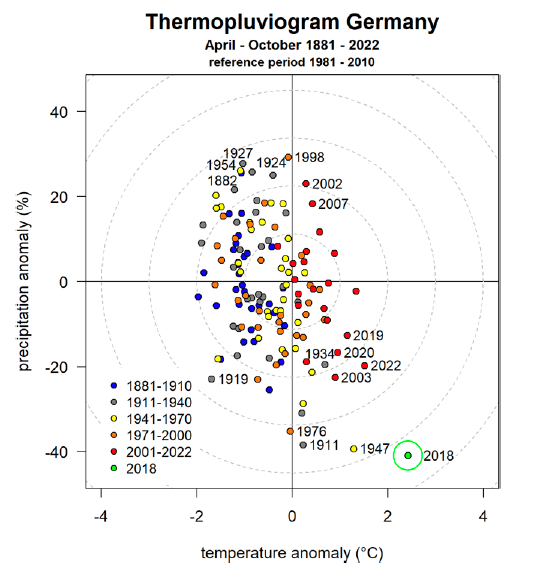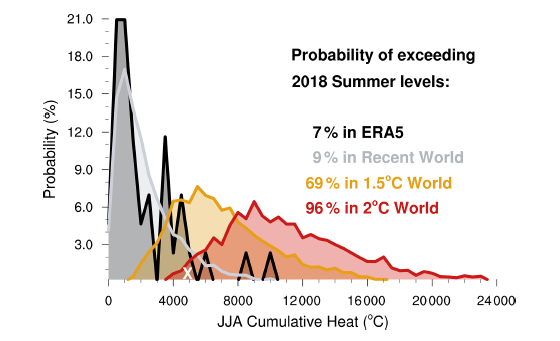A comprehensive study of the extreme hot and dry European summer of 2018

The intensity and frequency of summer heat waves over Europe significantly increased over recent decades and are projected with high certainty to increase further in the coming decades. Often heat waves are co-occurring with drought conditions, forming a so-called compound heat-drought event. The examples of the summers of 2003, 2018 and, most recently, 2022 are certainly in the memories of most people living in central Europe, not at least since impacts are far reaching; they range from 10,000s of premature deaths, to reduced yields, increased forest mortality and wildfires, water shortages to increased energy prices. Even though numerous studies on heat and drought waves as well as on their impacts have been published recently, most of them apply necessarily limited diagnostic approaches to study their driving factors and climatological relevance, for example.
In a recently published highlight paper in the journal “Natural Hazards and Earth System Sciences” (Rousi et al. 2023, doi: 10.5194/nhess-23-1699-2023), a comprehensive study of the extremely hot and dry summer in northern and central Europe is presented, with a focus on Germany and using various diagnostic approaches. The network of contributing researchers was funded by the German Ministry of Education and Research in the ClimXtreme I initiative (https://climxtreme.net/index.php/en/) and the topic sub-group on heat and drought was co-led by IMK researcher Andreas Fink. In terms of the extremeness of heat and drought combined, Figure 1 shows for the extended April–October summer season, that 2018 is the strongest event in Germany since reliable records began in 1881. It supersedes by large margins the summers of 2003 and 2022, only rivalled by the summer of 1947. The study also for the first time demonstrated that a positive summer North Atlantic Oscillation, a blocked upper-level circulation partly related to large-amplitude Rossby wave, and double upper-level jet structures were associated with heat waves over Scandinavia and Central Europe. “The novelty here lies in the application of the different diagnostic tools to explain the large-scale atmospheric settings in which the heat waves developed” says Andreas Fink. The study also alludes to springtime precursors, i.e. patterns of oceanic water temperatures in the North Atlantic and soil moisture anomalies in Germany.

The study also included an attribution to the anthropogenic climate change and a future projection. While the probability of the summer 2018 heat wave has, based on the latest climate models, already increased by a factor larger than 2 due to climate change, Figure 2 shows that in a 2°C warmer world basically each summer will exceed the heat of the summer 2018. “This study adds to the growing evidence that future summers will by far exceed recent and historic examples” says Joaquim Pinto, who co-coordinates ClimXtreme and is another IMK co-author on that paper. “We hope that the present study will inspire more comprehensive, inter- and transdisciplinary studies on present and future heat and drought events in Europe for the sake of being better prepared for the imminent event more extreme events” concludes Andreas Fink.
Working group: Atmospheric Dynamics
